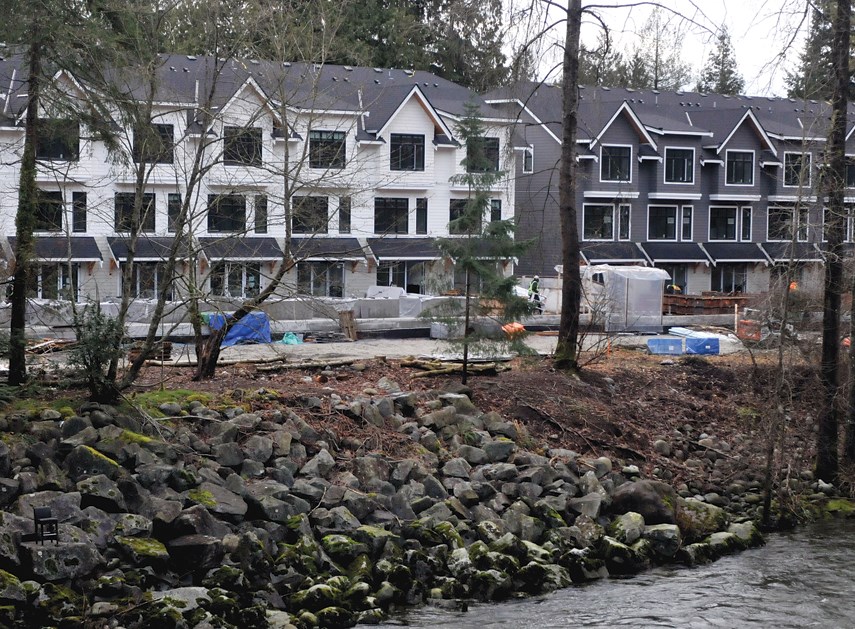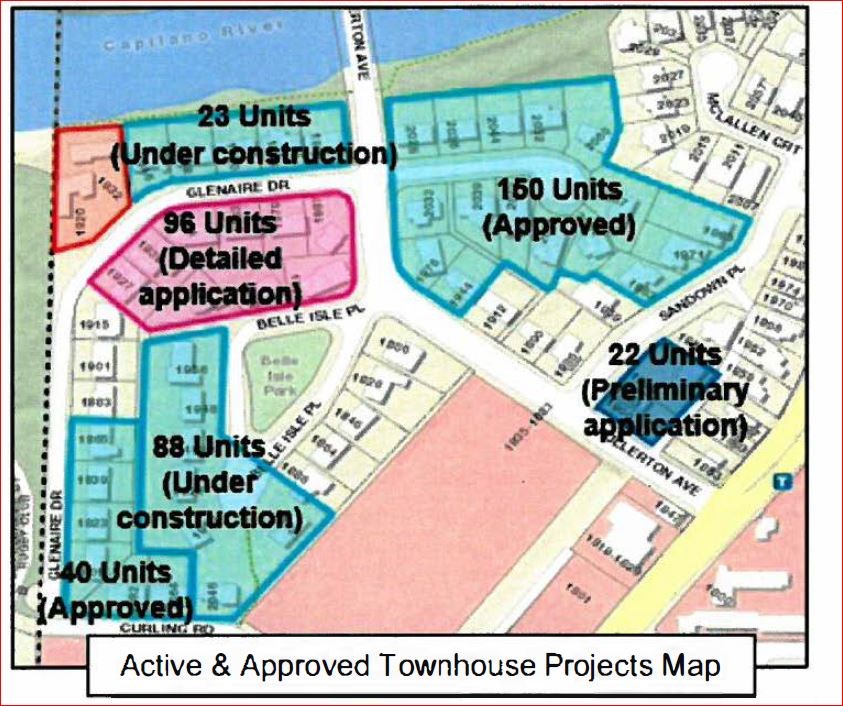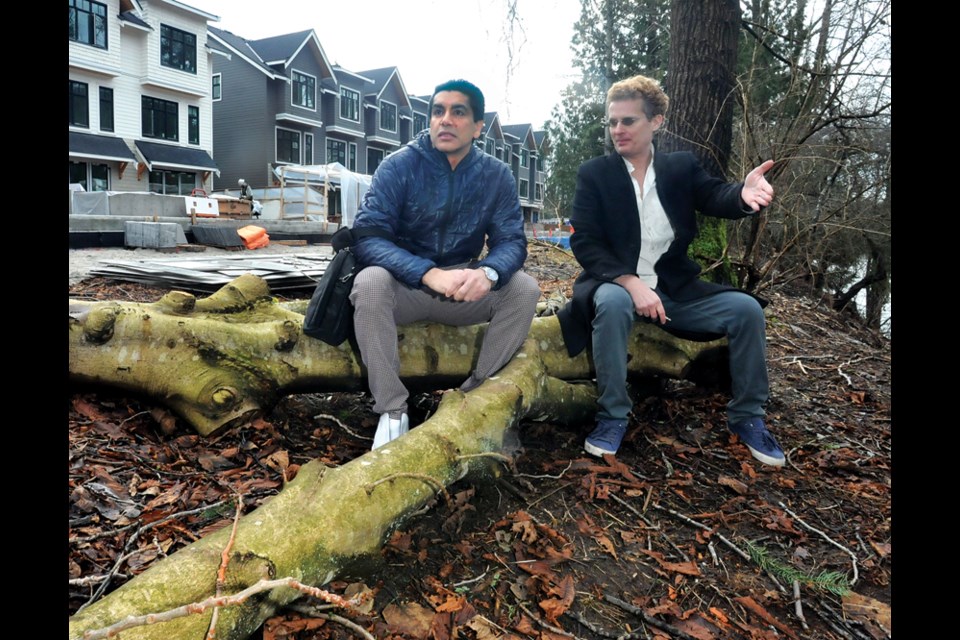As building continues on several townhouse projects off North Vancouver’s Fullerton Avenue, some residents are calling out the municipality for allowing developers to cut too many trees within riparian setback areas of the Capilano River.
Despite official assurances, “It’s not in the interests of the environment,” said Mateus Jaguar, whose partner Victoria Prendergast lives in the Woodcroft apartment complex directly across the river from several of the new developments under construction. “It doesn’t help the public. It doesn’t help the eagles.”
Reiner Rothe and Rizvan Visram are other Woodcroft residents who have watched the trees along the riverbank come down with increasing dismay.
“Every day I walk by here and it’s so beautiful,” said Rothe. “I’d like to preserve nature in harmony with any development.”
Visram added the pace of construction in the immediate area makes it even more important to preserve quality of life for residents.
Of 34 trees – mostly red cedar and alder – removed from in front of a 23-unit three-storey townhouse complex nearing completion by the company PC Urban on Glenaire Drive, 11 were within or bordering on a 15-metre streamside protection area, according to the District of North Vancouver. The streamside protection area also includes a riverside strip of land that is part of Capilano River Regional Park.
Five of the trees cut were within the park, and were removed after being identified in a third-party arborist’s report as “hazardous or invasive” with the permission of Metro Vancouver Regional Parks, according to Metro Vancouver.
While streamside riparian area protection falls to senior levels of government, in practice that is delegated to municipal governments, which regulate tree-cutting in those areas through development permits.
Of the trees removed from in front of the townhouse project, most were rated as being either in “normal” or “poor” health and were “mainly hedge cedars, trees growing out of structures or within the proposed development site,” according to District of North Vancouver spokeswoman Courtenay Rannard.
As a condition of tree removal, the developer will be required to restore the streamside riparian area with native plant species including both trees and shrubs.
According to the district, the work will eventually serve to rehabilitate the riparian area with more native species.
But Jaguar remains unconvinced about why the existing trees are being cut. He believes the trees are being cut simply to provide a better river view for the townhouse development.
“It’s a real heartbreak to see those trees come down. It’s just going to be a gigantic clearcut,” he said. “We don’t want to wait 20 or 30 years until we’re looking at a forest again.”

Residents worry that trees fronting a neighbouring 150-unit development on the banks of the river will be similarly felled.
Individually, reasons for cutting single trees sound reasonable, said Jaguar. “But then we can have the same conversation for every single other tree. It’s just levelling the forest around the developers’ property.”
According to the district, no trees within the 15-metre buffer next to the Capilano will be removed under the current permit for the Woodbridge Citimark townhome development, although there are several large-diameter trees on the developer’s land that will be cut.
Coun. Lisa Muri recently visited the site after Prendergast and Jaguar appeared in council to voice concerns about the tree cutting.
“I can see how people look at it,” she said. “When chainsaws go off in the district, people show up and pay attention, especially on a park at the side of a river. We’re all alerted by that sound and none of us like it.”
Muri said in the short term there will be a “more expansive view” in front of the development, before planted trees and shrubs grow larger.
Glen Parker, a member of North Shore Streamkeepers, said his group previously recommended to the Department of Fisheries and Oceans that municipalities not be given responsibility for managing streamside riparian areas. “There’s a conflict of interest,” he said. “You don’t let the fox guard the henhouse.”
Trees near the river bank are important, said Parker, because “they provide shade, they slow down the water infiltration into the ground.”
Parker said he’s more concerned with the amount of increased hard surfacing developments can collectively create near local watercourses through paving and pipes, which can change the hydrology of rivers to be less hospitable to salmon. That’s a concern shared by Muri.
“Lower Capilano is one big, massive construction site and there’s a lot more coming,” she said.
Over 300 new residential units are currently either approved or under construction in the immediate neighbourhood, with applications pending for 118 more.




